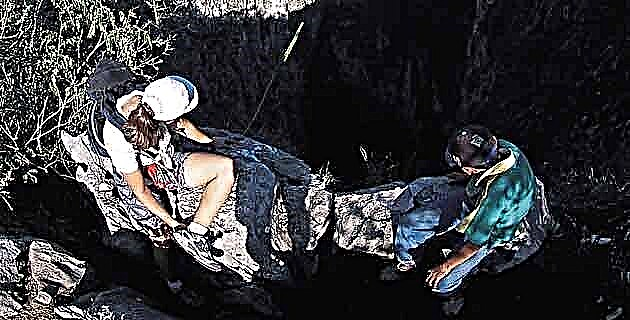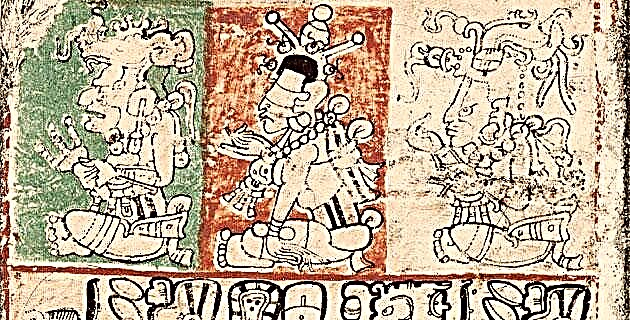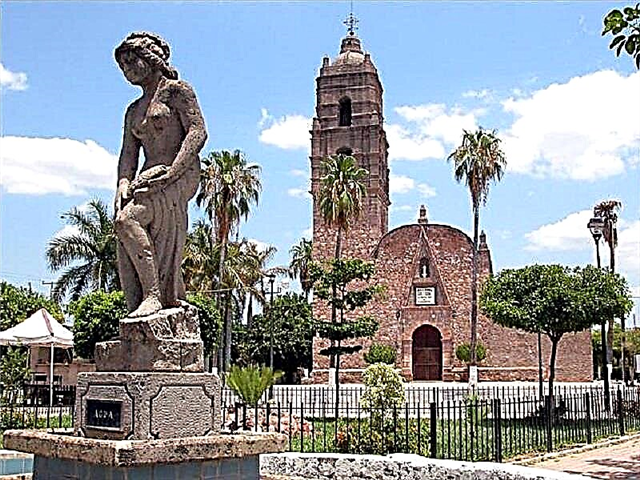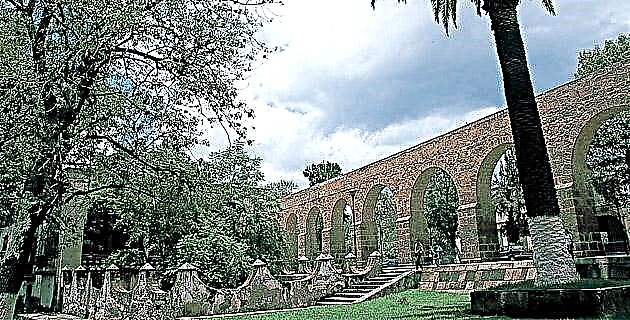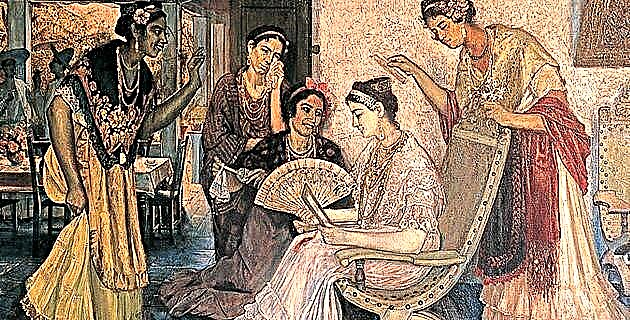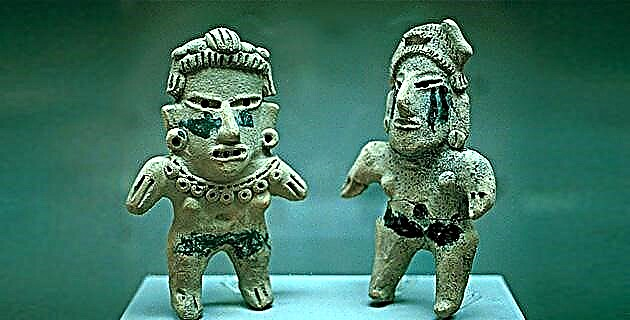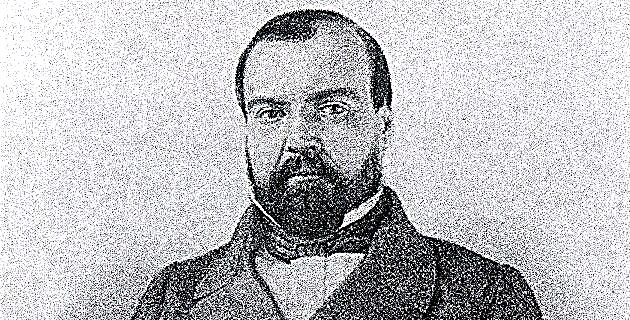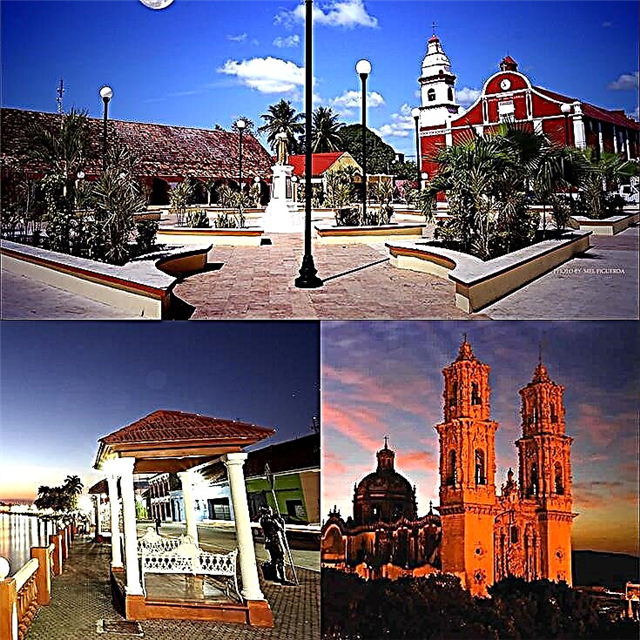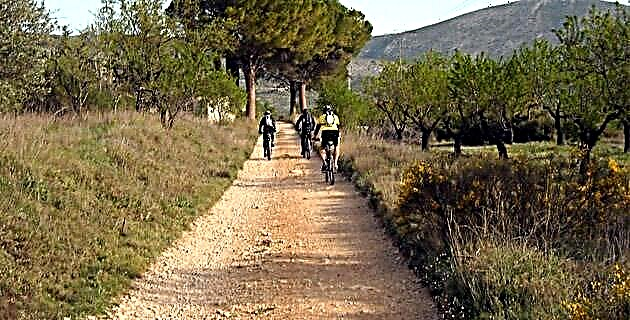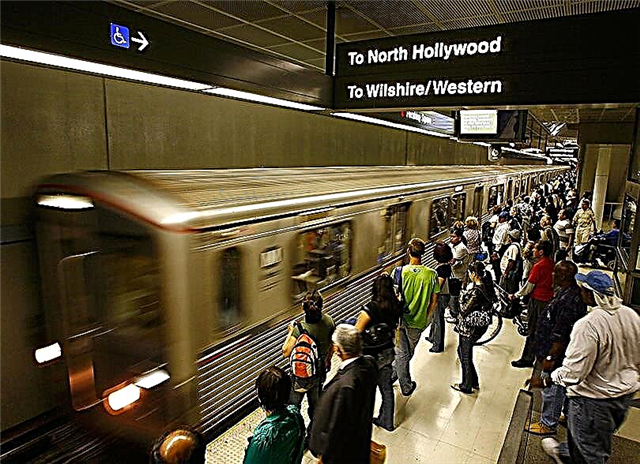Despite its reputation as the busiest city in the United States, there are still ways to get around Los Angeles while saving time and money.
Read on to learn what there is to know about Los Angeles public transportation.
Los Angeles: public transportation
Most public transportation in Los Angeles is handled by the Metro system, bus service, subway lines, four light rail lines, and express bus lines. In addition, it offers maps and travel planning aids on its website.
The most comfortable way to travel on the Los Angeles transit system is with a reusable TAP card, available at TAP vending machines for a $ 1 fee.
The regular base fare is $ 1.75 for a single ride or $ 7 for unlimited use for one day. For a week and a month it costs 25 and 100 USD, respectively.
These cards, also valid on municipal bus services and DASH buses, are easy to use. It just slides over the sensor at the station entrance or on board the bus.
Recharging can be done at the vending machines or on the TAP website here.
Metro buses
 The Metro system operates about 200 bus lines in the city of Los Angeles with 3 types of services: Metro Local, Metro Rapid and Metro Express.
The Metro system operates about 200 bus lines in the city of Los Angeles with 3 types of services: Metro Local, Metro Rapid and Metro Express.
1. Local Metro Buses
Buses painted orange with frequent stops on their routes along the main roads of the city.
2. Metro Rapid buses
Red units that stop less frequently than Metro Local buses. They have minimal delays at traffic lights, which is a huge advantage in a city like Los Angeles, as they have special sensors to keep them green when approaching.
3. Metro Express buses
Blue buses more oriented to tourism. They connect communities and business districts with downtown Los Angeles and generally circulate on freeways.
Metro Rail
Metro Rail is a Los Angeles public transportation network made up of 2 subway lines, 4 light rail lines and 2 express bus lines. Six of these lines converge in downtown Los Angeles.
Metro Rail subway lines
Red Line
The most useful for visitors to link with Union Station (station in downtown Los Angeles) and with North Hollywood in the San Fernando Valley, through downtown Hollywood and Universal City.
It connects to the Azul and Expo light rail lines at the 7th Street / Metro Center station downtown and the Orange Line express bus in North Hollywood.
Purple Line
This subway line runs between Downtown Los Angeles, Westlake and Koreatown and shares 6 stations with the Red Line.
Metro Rail light rail lines
Expo Line (Expo Line)
Light rail line linking downtown Los Angeles and Exposition Park, with Culver City and Santa Monica to the west. Connects to the Red Line at the 7th Street / Metro Center station.
Blue Line
It goes from downtown Los Angeles to Long Beach. It connects to the Red and Expo lines at 7th St / Metro Center and the Green Line at Willowbrook / Rosa Parks station.
Gold Line
Light rail service from East Los Angeles to Little Tokyo, the Arts District, Chinatown, and Pasadena, via Union Station, Mount Washington, and Highland Park. Connects to the Red Line at Union Station.
Green Line
Links Norwalk to Redondo Beach. Connects to the Blue Line at Willowbrook / Rosa Parks Station.
Metro Rail express buses
Orange Line
Makes a route between the western San Fernando Valley and North Hollywood, where passengers link to the Metro Rail Red Line that heads south to Hollywood and downtown Los Angeles.
Silver Line
It links the El Monte Regional Bus Station with the Harbor Gateway Transit Center, in Gardena, through downtown Los Angeles. Some buses continue to San Pedro.
Metro Rail schedules
Most lines operate between 4:30 a.m. and 1:00 a.m., from Sunday to Thursday, with extended hours until 2:30 a.m. Friday and Saturday.
The frequency varies at rush hour between every 5 minutes and from 10 to 20 minutes the rest of the day and night.
Municipal buses
 Municipal buses provide ground transportation services in Los Angeles and nearby districts and cities, through 3 companies: Big Blue Bus, Culver City Bus and Long Beach Transit. All accept payments with the TAP card.
Municipal buses provide ground transportation services in Los Angeles and nearby districts and cities, through 3 companies: Big Blue Bus, Culver City Bus and Long Beach Transit. All accept payments with the TAP card.
1. Big Blue Bus
Big Blue Bus is a municipal bus operator that serves much of West Greater Los Angeles, including Santa Monica, Venice, the Westside region of the county, and Los Angeles International Airport, popularly known as LAX. The price of the trip is 1.25 USD.
It is based in Santa Monica and its express bus 10 runs the route between this city and downtown Los Angeles, for 2.5 USD, in about an hour.
2. Culver City Bus
This company provides bus service in the city of Culver City and other locations on the Westside of Los Angeles County. Includes transportation to the Aviation / LAX station on the Green Line of the Metro Rail light rail.
3. Long Beach Transit
Long Beach Transit is a municipal transportation company serving Long Beach and other locations in the south and southeast of Los Angeles County and northwest Orange County.
DASH buses
 They are small shuttle buses (buses that travel between 2 points, generally with high frequency on a short route) operated by the Los Angeles Department of Transportation.
They are small shuttle buses (buses that travel between 2 points, generally with high frequency on a short route) operated by the Los Angeles Department of Transportation.
This is the most environmentally friendly among the bus lines in Los Angeles California, since its units run on clean fuel.
This mode of public transportation Los Angeles has 33 routes in the city, charging 50 ¢ per trip (0.25 ¢ for seniors and people with special limitations).
On weekdays he works until 6:00 p.m. or 7:00 p.m. Service is limited on weekends. Some of the most useful routes are as follows:
Beachwood Canyon Route
It operates Monday through Saturday from Hollywood Boulevard and Vine Street to Beachwood Drive. The trip offers excellent close-ups of the famous Hollywood Sign.
Downtown Routes
There are 5 separate routes that serve the hottest spots in the city.
Route A: between Little Tokyo and City West. It does not operate on the weekend.
Route B: goes from Chinatown to the Financial District. It does not operate on the weekend.
Route D: between Union Station and South Park. It does not operate on the weekend.
Route E: from City West to the Fashion District. It operates every day.
Route F: links the Financial District with Exposition Park and the University of Southern California. It operates every day.
Fairfax Route
It operates Monday through Saturday and its tour includes the Beverly Center Mall, Pacific Design Center, West Melrouse Avenue, Farmers Market Los Angeles, and Museum Row.
Hollywood Route
It operates daily covering Hollywood east of Highland Avenue. It connects to the Los Feliz short route at Franklin Avenue and Vermont Avenue.
Cars and motorcycles
 Peak hours in Los Angeles are 7 a.m. to 9 a.m. and 3:30 p.m. at 6 p.m.
Peak hours in Los Angeles are 7 a.m. to 9 a.m. and 3:30 p.m. at 6 p.m.
The most popular car rental agencies have branches in LAX and in different parts of the city. If you arrive at the airport without having reserved a car, you can use the courtesy phones in the arrival areas.
The offices of the agencies and the parking of the vehicles are outside the air terminal, but the companies provide a free shuttle service from the lower level.
Parking is free at the cheapest hotels and motels, while the fancier ones can charge $ 8- $ 45 a day. In restaurants, the price can vary between 3.5 and 10 USD.
If you want to rent a Harley-Davidson you must pay from 149 USD for 6 hours or from 185 USD per day. There are discounts for longer rentals.
Driving in Los Angeles
Most of the highways are identified with a number and a name, which is the destination.
Something about Los Angeles public transportation that is often confusing is that the freeways have 2 names in the center of the city. For example, I-10 is called the Santa Monica Freeway to the west of downtown and the San Bernardino Freeway to the east.
I-5 is the Golden State Freeway heading north and the Santa Ana Freeway heading south. East-west motorways are even numbered, while north to south motorways are odd numbered.
Taxis
 Getting around Los Angeles by taxi is expensive due to the size of the metropolitan area and the traffic jams.
Getting around Los Angeles by taxi is expensive due to the size of the metropolitan area and the traffic jams.
Taxis circulate the streets late into the night and are lined up at major airports, train stations, bus stations, and hotels. Telephone taxi requests, such as Uber, are popular.
In the city, the flagpole costs 2.85 USD and approximately 2.70 USD per mile. Taxis leaving from LAX charge a surcharge of $ 4.
Two of the most reliable taxi companies are Beverly Hills Cab and Checker Services, with a wide service area, including the airport.
Arriving in Los Angeles
People come to Los Angeles by plane, bus, train, car, or motorcycle.
Arriving in Los Angeles by plane
The main gateway to the city is the Los Angeles International Airport. It has 9 terminals and the LAX Shuttle Airline Connections bus service (free), which leads to the lower level (arrival) of each terminal. Taxis, hotel shuttles and cars stop there.
Transportation options from LAX
Taxis
Taxis are available outside the terminals and charge a flat rate depending on the destination, plus a USD 4 surcharge.
The flat rate to downtown Los Angeles is $ 47; from 30 to 35 USD to Santa Monica; 40 USD to West Hollywood and 50 USD to Hollywood.
Buses
The most comfortable ride is on LAX FlyAway, which goes to Union Station (Downtown Los Angeles), Hollywood, Van Nuys, Westwood Village, and Long Beach, for $ 9.75.
A cheaper way to get out of the airport by bus is by boarding the free drive to the LAX City Bus Center, from where lines that serve all of Los Angeles County operate. The trip costs between 1 and 1.25 USD, depending on the destination.
Subway
The free LAX Shuttle Airline Connections service connects to the Metro Rail Green Line Aviation Station. You can make a connection with another line to go to any destination in Los Angeles from Aviation, for 1.5 USD.
Arriving in Los Angeles by bus
Interstate Greyhound Lines buses arrive at the terminal in the industrial area of downtown Los Angeles. You should arrive preferably before dark.
Buses (18, 60, 62 and 760) depart from this terminal that go to the 7th Street / Metro Center station in the center. From there, trains go to Hollywood (Red Line), Culver City and Santa Monica (Expo Line), Koreatown (Purple Line) and Long Beach.
The Red Line and Purple Line stop at Union Station, where you can board the Metro Rail Light Rail Gold Line bound for Highland Park and Pasadena.
Some Greyhound Lines buses make the direct trip to the North Hollywood terminal (11239 Magnolia Boulevard) and others go through Long Beach (1498 Long Beach Boulevard).
Arriving in Los Angeles by train
 Trains from Amtrax, America's main intercity rail network, arrive at Union Station, a historic downtown Los Angeles station.
Trains from Amtrax, America's main intercity rail network, arrive at Union Station, a historic downtown Los Angeles station.
Interstate trains serving the city are the Coast Starlight (Seattle, Washington state, daily), the Southwest Chief (Chicago, Illinois, daily) and the Sunset Limited (New Orleans, Louisiana, 3 times a week).
The Pacific Surfliner operates off the coast of Southern California making several trips a day between San Diego, Santa Barbara and San Luis Obispo, via Los Angeles.
Arriving in Los Angeles by car or motorcycle
If you are driving to Los Angeles, there are several routes into the metropolitan area. The fastest route from San Francisco and Northern California is Interstate 5, through the San Joaquin Valley.
Highway 1 (Pacific Coast Highway) and Highway 101 (Route 101) are slower, but more scenic.
From San Diego and other locations south, the obvious route to Los Angeles is Interstate 5. Near Irvine, Interstate 405 forks off I-5 and heads west toward Long Beach and Santa Monica, without reaching full to downtown Los Angeles. 405 rejoins I-5 near San Fernando.
From Las Vegas, Nevada, or the Grand Canyon, take I-15 south and then I-10, which is the main east-west thoroughfare that serves Los Angeles and continues to Santa Monica.
How much does the bus ticket cost in Los Angeles?
The most used buses in Los Angeles are the Metro system. The cost of a trip is 1.75 USD with the TAP card. You can also pay in cash, but with the exact amount, as the drivers do not carry change.
How to get around Los Angeles?
The fastest and cheapest way to get around Los Angeles is by Metro, an intermodal transportation system that combines bus, subway, and express train services.
What is public transportation like in Los Angeles?
 The modes of transport that use the highways and streets (buses, taxis, cars) have the problem of traffic congestion.
The modes of transport that use the highways and streets (buses, taxis, cars) have the problem of traffic congestion.
Rail systems (subways, trains) have the advantage of avoiding traffic jams. The combination of bus-metro-train that makes up the Metro system allows moving more efficiently.
How to get from the airport to downtown Los Angeles?
It can be reached by taxi, bus and metro. A taxi from LAX to downtown Los Angeles costs $ 51 ($ 47 flat rate + $ 4 surcharge); LAX FlyAway buses charge $ 9.75 and go to Union Station (downtown). The metro journey involves first going by free bus to the Aviation station (Green Line) and then making the necessary connections on Metro Rail.
Los Angeles Airport Metro
The free LAX Shuttle Airline Connections bus service arrives at Aviation Station (Green Line of the Metro Rail light rail system). From there you can make the other connections with Metro Rail to reach the specific destination in Los Angeles.
Los Angeles 2020 metro map
Metro Los Angeles map:

Where to buy TAP Los Angeles card
The TAP Los Angeles card is the most practical and economical way to get around the city. It is purchased from TAP vending machines. The physical card costs 1 USD and then the corresponding amount must be recharged according to the user's travel needs.
Los Angeles public transportation: use of bicycles
The public transportation system in California promotes the use of bicycles as a means of mobility.
Most buses in Los Angeles have bike racks and the bikes travel without a surcharge in the price of the trip, only asking that they be loaded and unloaded safely.
The implements not firmly attached to the bicycle (helmet, lights, bags) must be carried by the user. When getting off you always have to do it at the front of the bus and notify the driver of the unloading of the bicycle.
Folding units with wheels no larger than 20 inches can be folded on board. Metro Rail trains also accept bicycles.
Los Angeles has a few bike sharing programs, the following being the most popular:
Metro Bike Share
It has more than 60 bike kiosks in the downtown area, including Chinatown, the Arts District and Little Tokyo.
The 3.5 USD fee for 30 minutes can be paid by debit and credit card. The payment can also be made with the TAP card, previously registering on the Metro Bike Share website.
This operator has a telephone application that reports in real time on the availability of bicycles and bicycle racks.
Breeze Bike Share
This service works in Santa Monica, Venice and Marina del Rey. Bicycles are collected and delivered to any kiosk in the system and the hourly rent is USD 7. Long-term memberships and students have preferential prices.
If you liked this article about public transportation Los Angeles, share it with your friends on social media.


